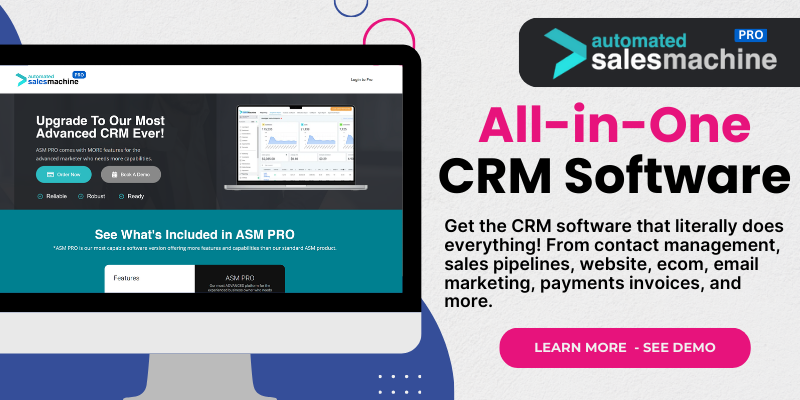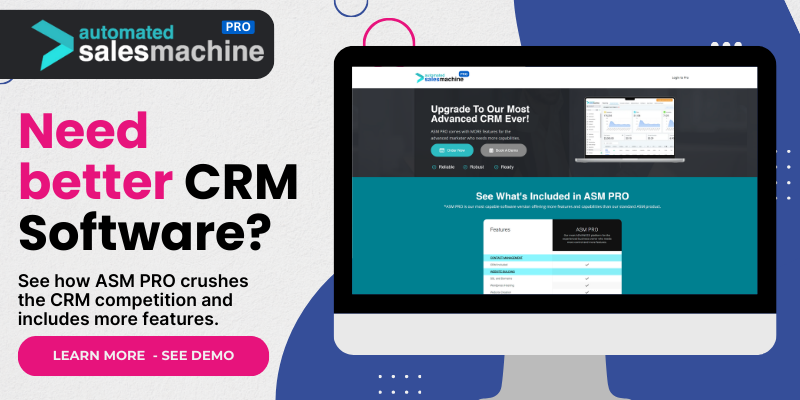Understanding Tableau’s Core Functionality
What is Tableau?
Alright, let’s kick things off with the basics—what the heck is Tableau? In my own experience, I’ve come to see it as a powerful data visualization tool. Think of it as a fancy telescope for your data; it lets you see trends, patterns, and insights that might be hiding in plain sight. You don’t need to be a data scientist to get started, which is a huge plus!
Tableau is used by various industries to make sense of their data. Whether you’re in sales, marketing, finance, or even healthcare, Tableau helps in making data-driven decisions. I remember the first time I created a visualization; it was like a lightbulb moment for me. Suddenly, I could see the story behind my data!
What really sets Tableau apart is its ability to connect with different data sources—be it spreadsheets, databases, or cloud services—and create stunning visual representations. So, yeah, it’s not a CRM, but it does complement CRM systems by providing valuable insights derived from customer data stored within those CRMs.
How Does It Work?
The beauty of Tableau is in its user-friendly interface. You can drag and drop elements to create visualizations almost effortlessly. When I first started using Tableau, I was blown away by how quickly I could create graphs and dashboards. You can link it to your data in real-time, which means you’re always looking at the most current figures.
Additionally, Tableau offers a suite of products, such as Tableau Desktop for individual users, Tableau Server for collaboration, and Tableau Online for cloud-based analysis. It’s truly versatile! For instance, some colleagues of mine use Tableau Server to share their dashboards with stakeholders and get instant feedback.
It’s worth noting, while Tableau can pull in data from various sources, it doesn’t manage customer relationships like a CRM tool does. Instead, think of it as a complementary tool that helps you make sense of the customer data within your CRM.
Who Uses Tableau?
Honestly, the list of Tableau users is endless. When I attended a tech conference last year, I was surprised to see everyone—from small startups to big corporations—utilizing Tableau. It’s become a staple in industries looking to leverage data for strategic decisions.
Marketing departments love Tableau for funnel analysis and customer segmentation. In sales, it’s used to track leads and understand sales patterns. Even non-profits use it to visualize their impact and attract more funding. So no matter what your field is, if you’re dealing with data, there’s a good chance Tableau can help you out.
And let’s not forget freelancers and consultants. Many of us use Tableau to create visually compelling reports for clients. Using Tableau not only enhances the presentation of data but also reflects a level of professionalism. It’s hard to ignore a beautiful dashboard!
Differences Between Tableau and CRM Software
Defining CRM Software
When I think of CRM (Customer Relationship Management) software, I envision tools designed to manage a company’s interactions with current and potential customers. These tools help in organizing, automating, and synchronizing sales, marketing, and customer service activities. Popular examples include Salesforce, HubSpot, and Zoho.
CRMs are all about tracking customer interactions, be it emails, calls, or meetings. They help sales teams manage relationships and streamline processes. I often find that using a CRM effectively can boost my sales productivity significantly. It helps keep tabs on where each prospect is in the sales funnel.
The real deal is that while CRMs hold valuable data about customers, Tableau is there to make sense of that data. They work best when used in conjunction, but they’re different beasts altogether.
Key Differences in Functionality
Here’s where it gets interesting. As I mentioned, a CRM primarily focuses on customer relationship management—managing interactions and tracking sales pipelines. Tableau, on the other hand, is more about visualizing data. It transforms raw data into meaningful graphics that help us interpret trends and patterns.
If we think about it practically, while a CRM can tell you how many leads you have and at what stage they’re in, Tableau can show you the conversion rates over time, visualize performance against goals, and identify which leads are most likely to convert. It’s like having two superheroes for data!
This functional difference is crucial. While a CRM provides a grounded understanding, Tableau raises your perspective to see the bigger picture. This is where leveraging both can be a game-changer in strategizing your business decisions.
When to Use Each Tool
In my experience, the timing for using each tool typically hinges on the nature of the task at hand. For day-to-day customer interactions and follow-ups, CRMs are your go-to. They’re built for managing relationships.
However, when it comes to analyzing customer data, spotting trends, or making strategic decisions based on historical data, Tableau shines. For example, I often use Tableau after gathering customer data through a CRM, to visualize and present findings in monthly reports.
Ultimately, think of it like this: use CRM for managing, and Tableau for analyzing and convincing. This approach has worked wonders for me and my colleagues.
Integrating Tableau with CRM Systems
Why Integration Matters
Now, let’s talk about integration! Imagine having all your customer relationship data from your CRM beautifully visualized in Tableau—sounds fantastic, right? Integrating Tableau with your CRM system helps you create a seamless flow of information. It allows for enhanced insights into customer behavior, sales performance, and campaign effectiveness.
From my perspective, integration is essential. When I linked Tableau to a CRM I was using, it made my reports richer and significantly easier to interpret. I could quickly showcase metrics that mattered to my team and our stakeholders.
Moreover, integration encourages real-time updates. So, whenever there’s a shift in customer data, it automatically updates in Tableau. This means you’re always working with the freshest data, which is a critical aspect of effective decision-making.
How to Integrate Tableau with Your CRM
Integrating Tableau with popular CRM platforms typically involves connecting your CRM as a data source in Tableau. Most CRM systems have native connectors. It sounds complex but, trust me, it’s usually straightforward! You can set up the connection in the Tableau interface, and it walks you through the steps.
Once connected, you can start pulling in relevant data fields from your CRM, like contact details, sales figures, and campaign statuses. I remember the first time I did this; it felt like opening Pandora’s Box! Suddenly, any query I had about customer engagement could be answered with clear visuals.
It’s essential to keep in mind the structure of your data. Mapping your CRM fields to Tableau correctly ensures that your visualizations make sense and are actionable. Take your time to get this part right—it pays off!
Best Practices for Using Tableau with CRM Data
Here’s where I share what I’ve learned: when pairing Tableau with a CRM, prioritize data cleanliness. Make sure your CRM data is up-to-date and accurate before you pull it into Tableau. Trust me, dirty data will lead to misleading visualizations, and that’s the last thing you want.
Next, focus on the metrics that matter to you. Determine what insights you want to extract from your CRM data and create visualizations that reflect those goals. I’ve learned this lesson the hard way; not every data point is important, and wasting time on unnecessary visualizations isn’t productive.
Lastly, get feedback from your team. When I started using Tableau, I often shared my dashboards to gather feedback. It really helped refine the visuals and made sure they were serving the community’s needs, and that’s a win-win!
Conclusion: The Collaborative Power of Tableau and CRM
In conclusion, while Tableau isn’t a CRM software, it extraordinarily complements CRM tools by translating customer data into meaningful insights. Learning how to integrate and utilize both in tandem can elevate your understanding of customer behavior and enhance decision-making in your organization.
Whether you’re a marketer, salesperson, or executive, utilizing the combined power of CRM systems and Tableau can lead to better strategies, increased sales, and ultimately, happier customers. It’s been quite a journey using these tools to tell data stories, and I’m excited to see how they evolve!
FAQs
1. Is Tableau a CRM software?
No, Tableau is not a CRM software. It’s primarily a data visualization tool used to analyze and display data insights. However, it can work alongside CRM systems to provide deeper insights into customer data.
2. How can I integrate Tableau with my CRM?
Integrating Tableau with your CRM typically involves connecting your CRM as a data source in Tableau. Most CRM platforms offer native connectors to facilitate this process, making it relatively straightforward.
3. What are the primary functions of a CRM?
CRMs are designed to manage and analyze customer interactions. They help businesses track leads, sales, customer behavior, and improve relationships. Essentially, they provide a structured way to manage customer data and enhance communication.
4. Can I visualize historical CRM data in Tableau?
Absolutely! One of the primary uses of Tableau is to visualize historical data. When you connect your CRM data, you can create graphs and dashboards that showcase trends over time, allowing for better strategic planning.
5. What benefits can I gain from using both Tableau and CRM software together?
Using both allows you to manage customer relationships effectively while also drawing valuable insights from your data. You get the best of both worlds: streamlined interaction management from the CRM and powerful data visualization from Tableau, enhancing overall decision-making.

